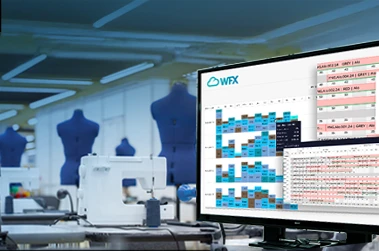The digital age has disrupted the fashion industry, and businesses that don’t adapt risk getting left behind. If you’re a fashion business looking to kickstart your digital transformation journey, WFX is here to help. We’ve helped hundreds of fashion brands, manufacturers and sourcing companies to go digital.
Here are some recommendations from our team for businesses looking to embrace digital transformation:
1. Conduct a digital maturity assessment: Evaluate your current level of digital maturity to identify areas where you excel and areas for improvement. This will help you develop a clear roadmap for digital transformation.
2. Develop a clear digital transformation roadmap: Based on the results of your digital maturity assessment, develop a clear roadmap for digital transformation, outlining goals, objectives, and timelines. This will help you stay focused and accountable.
3. Prioritize tech investments: Prioritize investments in digital technologies that will have the biggest impact on your operations and align with your overall strategy. This will ensure that you get the most value out of your investments.
4. Leverage data-driven decision making: Data analytics can provide valuable insights into consumer behavior, inventory management, and supply chain optimization. By investing in data analytics tools and platforms, businesses can use data to inform their decision-making processes and drive growth.
5. Foster a culture of innovation: Digital transformation requires a culture that is open to experimentation and innovation. Encouraging collaboration, risk-taking, and a willingness to try new things can help businesses to successfully navigate the digital landscape.
6. Develop a cross-functional team: Digital transformation requires collaboration across multiple departments and functions within a business. By establishing a cross-functional team dedicated to digital transformation, businesses can ensure that everyone is aligned on goals and objectives.
7. Embrace agile methodologies: Agile methodologies prioritize flexibility and adaptability, which is critical in the constantly evolving digital landscape. By embracing agile methodologies, businesses can iterate quickly, respond to changing market conditions, and stay ahead of the competition.
8. Monitor progress and adjust course as needed: Digital transformation is an ongoing process, and businesses should continuously monitor their progress and adjust course as needed. By tracking key metrics and regularly reviewing their digital transformation roadmap, businesses can ensure that they are on track to achieve their goals.
While these best practices are a great starting point, we know that digital transformation can seem like an overwhelming undertaking!
That’s why we have created a FREE GUIDE: Future-Proofing Fashion: A Blueprint for Digital Transformation & Data Utilization.
Download this guide to explore digital intervention opportunities for your fashion business, as well as practical strategies for leveraging digitalization to drive growth and optimize operations!






